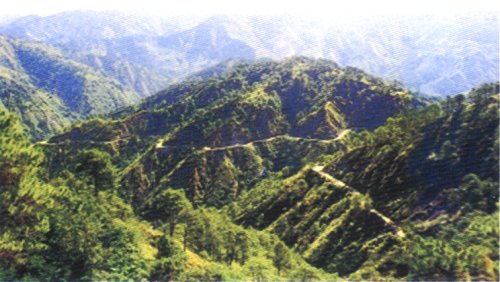

During
the Spanish Era, Benguet was not a remote area for the Spaniards to explore. The vastness and promising economic potential of the pace
lured the Spaniards to conduct series of expeditions. Early explorers included Juan Salcedo in 1572 and Don Q.M.
Quirante in 1664. Series of
attempts were made to subjugate the “Igorots” but failed. Finally, in 1864, Commandante de Galvey established his
Commandancia at La Trinidad, Benguet (named after his wife).
Galvey went to establish the province of Benguet with 31 rancherias.
The first Kapitan of Benguet was Pulito of Kafagway, now Baguio, and a
minor rancheria of about 20 houses.
The
presidential of Baguio was first established in the house of the Campulet at the
top of the Tabacalera road at the lower end of Guisad Valley.
Later, the presidential of Baguio was moved to the present site of the
Baguio City Hall.
The
Spaniards established order, built churches, and schools, made trails and
introduced coffee during their long occupation of the area.
The
Americans came early in 1900 and established their government with H. Whitmarsh
as the appointed Governor of Benguet and Baguio as the capital.
This was the first provincial government to be established in the
Philippines and this happened a year prior to the inauguration of the civil
government of the Philippines. Their
best administrators and teachers were fervent boosters and promoters: Worcester, Wright, Forbes, Pack, Barrows, Eckman and others
who together with Filipinos committed to make the place a haven.
Several
mines near Baguio within Benguet were developed and were very productive. Business in the city also flourished with the establishment
of commercial centers. Recreational
facilities were also installed. Then,
the city grew before the outbreak of the World War II.
Baguio
was bombed on December 8, 1941 by the Japanese and they occupied it on December
27 of the same year. When the war
ended, rehabilitation was immediately done with the supervision of the American
based at Camp John Hay. Since then,
the city became a favorite for vacationist.
The July 16, 1990 earthquake devastated the entire city with its infrastructure, buildings and its populace but it did not end here. Four years after the great earthquake, Baguio City has recovered and is standing firm and proud for its restored heritage.
Until today, Baguio City as the summer Capital of the Philippines, is the most frequented destination in Northern Luzon by local and foreign tourists alike.
Information taken from PTA's Cordillera 1999.